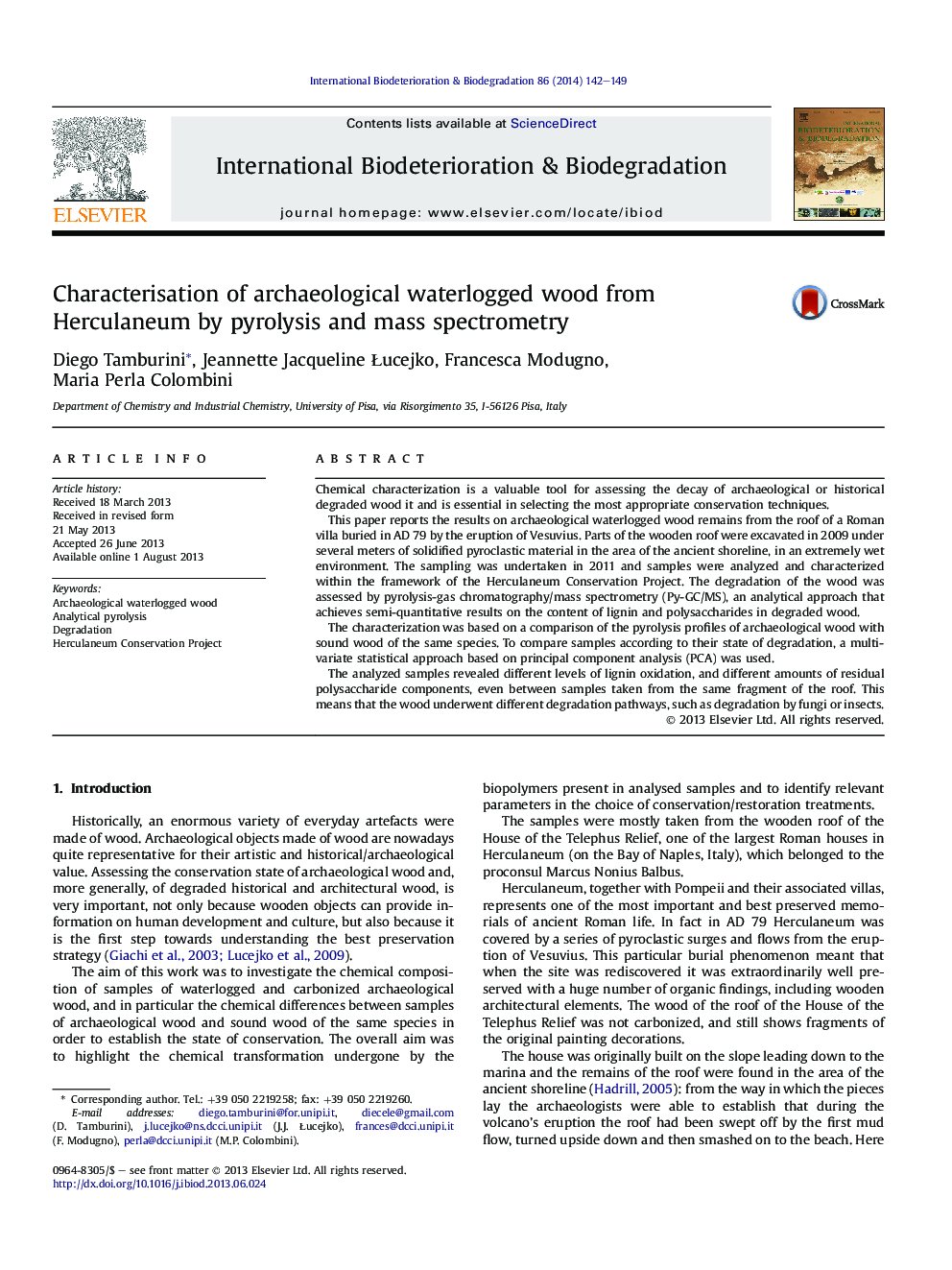| کد مقاله | کد نشریه | سال انتشار | مقاله انگلیسی | نسخه تمام متن |
|---|---|---|---|---|
| 4364865 | 1301727 | 2014 | 8 صفحه PDF | دانلود رایگان |

• Py(HMDS)-GC/MS establishes the state of conservation of wood in the Herculaneum site.
• Characterization of carbonized wood to evaluate the composition of the lignin residue.
• Multivariate statistical analysis (PCA) used to highlight degradation pathways.
Chemical characterization is a valuable tool for assessing the decay of archaeological or historical degraded wood it and is essential in selecting the most appropriate conservation techniques.This paper reports the results on archaeological waterlogged wood remains from the roof of a Roman villa buried in AD 79 by the eruption of Vesuvius. Parts of the wooden roof were excavated in 2009 under several meters of solidified pyroclastic material in the area of the ancient shoreline, in an extremely wet environment. The sampling was undertaken in 2011 and samples were analyzed and characterized within the framework of the Herculaneum Conservation Project. The degradation of the wood was assessed by pyrolysis-gas chromatography/mass spectrometry (Py-GC/MS), an analytical approach that achieves semi-quantitative results on the content of lignin and polysaccharides in degraded wood.The characterization was based on a comparison of the pyrolysis profiles of archaeological wood with sound wood of the same species. To compare samples according to their state of degradation, a multivariate statistical approach based on principal component analysis (PCA) was used.The analyzed samples revealed different levels of lignin oxidation, and different amounts of residual polysaccharide components, even between samples taken from the same fragment of the roof. This means that the wood underwent different degradation pathways, such as degradation by fungi or insects.
Figure optionsDownload as PowerPoint slide
Journal: International Biodeterioration & Biodegradation - Volume 86, Part B, January 2014, Pages 142–149